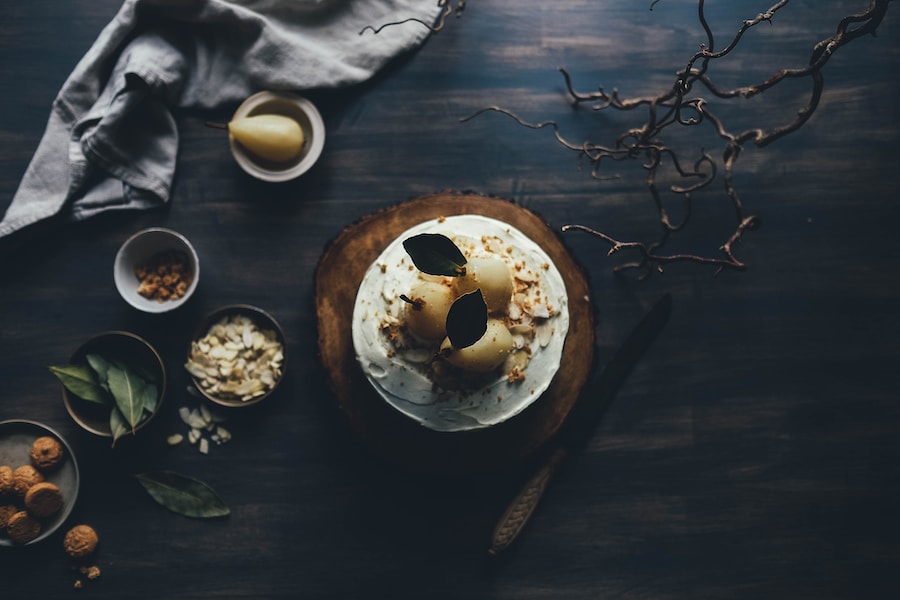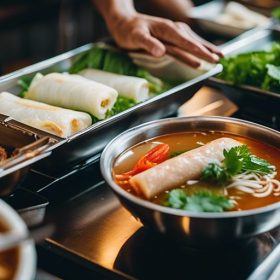Vietnamese cuisine is known for its delicate balance of flavors, and this balance is achieved through the concept of Yin and Yang. Yin and Yang are opposing forces that exist in all aspects of life, including food. In Vietnamese cooking, Yin represents cooling and refreshing flavors, while Yang represents warming and intense flavors. The importance of balance in Vietnamese cuisine cannot be overstated, as it is believed to promote good health and well-being.
The Five Elements
In addition to Yin and Yang, Vietnamese cuisine also incorporates the concept of the Five Elements: wood, fire, earth, metal, and water. Each element is associated with certain flavors and characteristics, and they all contribute to balancing the flavors in Vietnamese dishes. Wood is associated with sour flavors, fire with bitter flavors, earth with sweet flavors, metal with spicy flavors, and water with salty flavors. By incorporating these elements into their cooking, Vietnamese chefs are able to create harmonious and balanced dishes.
Texture
Texture plays a crucial role in Vietnamese cuisine, as it adds another dimension to the overall dining experience. Vietnamese dishes often feature a combination of soft and crunchy textures, creating a delightful contrast that keeps diners engaged. For example, a typical Vietnamese salad might include crisp lettuce, tender herbs, crunchy peanuts, and chewy rice noodles. This variety of textures not only adds interest to the dish but also enhances the overall flavor profile.
Sweet and Sour Flavors
Balancing sweet and sour flavors is a hallmark of Vietnamese cuisine. The combination of these two opposing tastes creates a harmonious blend that is both refreshing and satisfying. One classic example of this balance is found in the popular dish called “Goi Du Du” or green papaya salad. The sweetness of the papaya is balanced by the tanginess of lime juice and the spiciness of chili peppers. This combination of flavors creates a refreshing and vibrant dish that is beloved by many.
Herbs and Spices
Herbs and spices are essential components of Vietnamese cooking, and they play a crucial role in balancing flavors. Vietnamese cuisine is known for its abundant use of fresh herbs such as cilantro, mint, and Thai basil. These herbs add a burst of freshness to dishes and help to balance out the richness of other ingredients. Spices such as ginger, lemongrass, and star anise are also commonly used in Vietnamese cooking, adding depth and complexity to the flavors.
Umami
Umami is often referred to as the fifth taste, alongside sweet, sour, salty, and bitter. It is a savory flavor that adds depth and richness to dishes. Vietnamese cuisine incorporates umami through ingredients such as fish sauce, shrimp paste, and fermented soybean paste. These ingredients provide a unique umami flavor that is characteristic of Vietnamese dishes. One example of a dish that highlights umami flavors is “Pho,” a traditional Vietnamese noodle soup made with beef or chicken broth. The slow-cooked broth is rich in umami flavors and is balanced by the freshness of herbs and the crunchiness of bean sprouts.
Heat and Coolness
Balancing heat and coolness is another important aspect of Vietnamese cuisine. Vietnamese dishes often incorporate spicy elements such as chili peppers or black pepper to add heat to a dish. However, this heat is balanced by cooling ingredients such as cucumber or lime juice. This balance of heat and coolness creates a harmonious blend of flavors that is both satisfying and refreshing. One example of a dish that showcases this balance is “Bun Cha,” a grilled pork dish served with rice noodles, fresh herbs, and a dipping sauce that combines spicy, sweet, sour, and salty flavors.
Saltiness
The art of balancing saltiness is crucial in Vietnamese cuisine. Salt is used sparingly in Vietnamese cooking, as it is believed that too much salt can disrupt the balance of flavors. Instead, Vietnamese chefs rely on other ingredients such as fish sauce, soy sauce, and shrimp paste to add a savory and salty flavor to dishes. These ingredients are used in moderation to ensure that the overall flavor profile remains balanced.
Soups and Stews
Soups and stews are an integral part of Vietnamese cuisine, and they showcase the balance of flavors that is characteristic of Vietnamese cooking. Vietnamese soups and stews often combine a variety of ingredients such as meat, vegetables, herbs, and spices to create a complex and flavorful dish. One popular Vietnamese soup is “Canh Chua,” a sour soup made with tamarind, pineapple, fish, and various vegetables. The sourness of the tamarind is balanced by the sweetness of the pineapple and the savory flavors of the fish and vegetables.
Dipping Sauces
Dipping sauces are an essential component of Vietnamese cuisine, and they play a crucial role in balancing flavors. Vietnamese dipping sauces are typically a combination of sweet, sour, salty, and spicy flavors. One popular dipping sauce is “Nuoc Cham,” which is made with fish sauce, lime juice, sugar, garlic, and chili peppers. This sauce adds a burst of flavor to dishes and enhances the overall dining experience.
Fusion Dishes
In recent years, there has been an increase in the popularity of fusion cuisine, which combines elements from different culinary traditions. Vietnamese fusion dishes often incorporate the concept of Yin and Yang to create a harmonious blend of flavors. For example, a fusion dish might combine Vietnamese ingredients such as lemongrass and fish sauce with elements from another cuisine such as Italian pasta or Mexican tacos. This blending of flavors creates a unique and exciting dining experience.
The importance of balance in Vietnamese cuisine cannot be overstated. The concept of Yin and Yang, along with the incorporation of the Five Elements, helps to create harmonious and balanced dishes. From the balance of sweet and sour flavors to the use of herbs and spices, Vietnamese cuisine is a testament to the art of balancing flavors. By experimenting with these principles in your own cooking, you can create dishes that are not only delicious but also promote good health and well-being. So go ahead and embrace the concept of Yin and Yang in your kitchen, and discover the joy of balanced flavors.

Cuong Nguyen is a talented writer and experienced waitress at Vietnampalace.net, a renowned Vietnamese restaurant that offers an extensive menu of authentic Vietnamese cuisine. With a background in the competition of Vietnamese cuisine, Cuong brings a wealth of knowledge and expertise to the dining experience. From delicious pho dishes to fresh spring rolls, Cuong ensures that every meal is made with the freshest ingredients and authentic flavors.With exceptional service and a friendly atmosphere, Cuong takes pride in providing a memorable dining experience for every customer.
Whether you’re a vegetarian looking for options or a meat lover craving the flavors of traditional Vietnamese dishes, Cuong guarantees a delightful culinary adventure. So, visit Vietnampalace.net and let Cuong guide you through the tantalizing world of Vietnamese cuisine.



